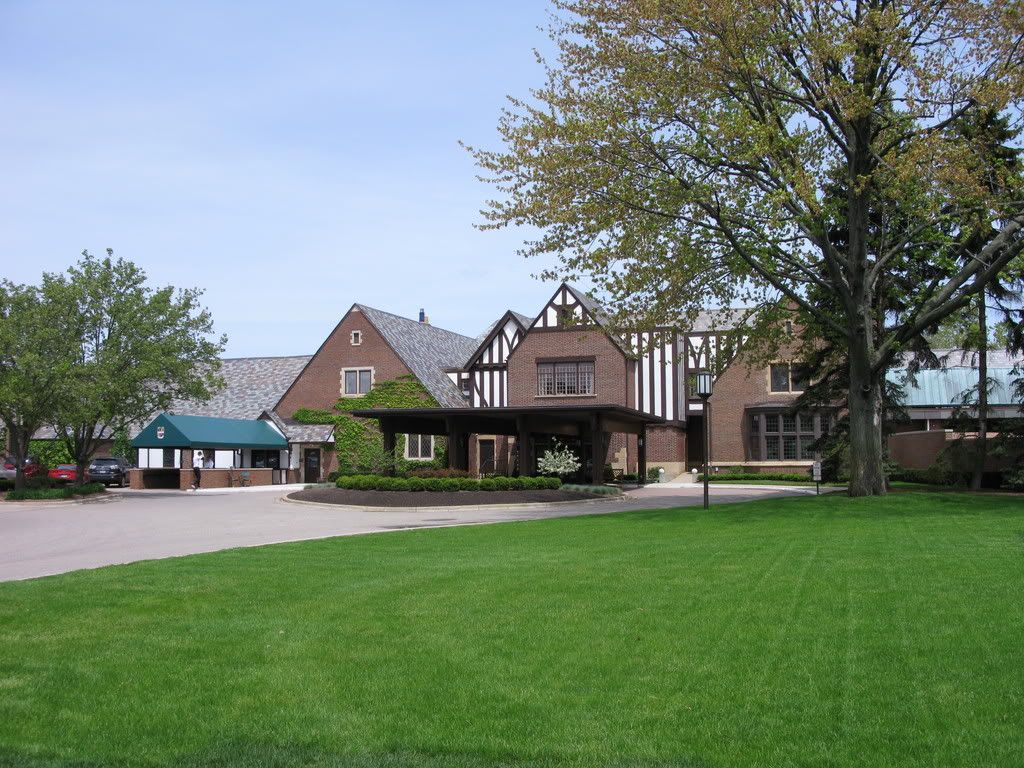GCAer superintendent Brad Anderson has a new gig as head super at Birmingham CC outside
Detroit. Brad and I began exchanging emails last winter when we discovered we had a mutual
interest in the history of architecture in the Chicago area. Recently he was kind enough to allow
me to stop by for a course tour and to snap a few pictures. Brad most recently was head super at
Midlane Golf resort in Waukegan, Il. and before that worked at Old Elm CC.
Birmingham CC dates to an original 9 hole course by Tom Bendelow which he expanded to 18 in
the 1920's. Later Wilfrid Reid and William Connellan did some work as did William Diddel.
More recently Robert Trent Jones and Arthur Hills touched the course. Presently Dave Esler is
redoing the tees and consulting on a long range plan. Birmingham CC hosted the 1953 PGA
Championship.
My tour was relatively quick so I will simply present a few photos with minimal explanation.
Brad indicated he thinks the original Bendelow routing and original green pads are relatively
intact. Many of the greens had a variety of small mounds around them similar to some of those
found on the South Course at Olympia Fields which Bendelow designed around the same time.
Natural attributes include a stream running through the course and several ridges. The routing
features an inner front nine and outer back nine which flow back and forth across the property
from a centrally located Clubhouse. One very neat aspect of the course was the existence of
small 3" to 6" undulations in the fairways. There is an interesting convergence point on a ridge at
the northeast section of the course where 8 and 11 greens and 9 and 12 tees are located. My
initial impression was quite favorable with the caveat that a more consistent bunkering scheme is
needed. While not over treed in comparison to many courses from the same era there were some
fairly egregious examples of misplaced conifers. New square tees by Dave Esler add a welcome
classic look and feel.
The club website has a nice hole by hole presentation with photos and diagrams of each hole in
the guest section.
www.bhamcc.comBrad with the first hole in the background.

The Course layout

The 5th hole shares a ridge with the 16th. Both are doglegs right with 5 coming downhill while 16
moves dramatically up to a green perched atop the ridge.
5 tee

5 green
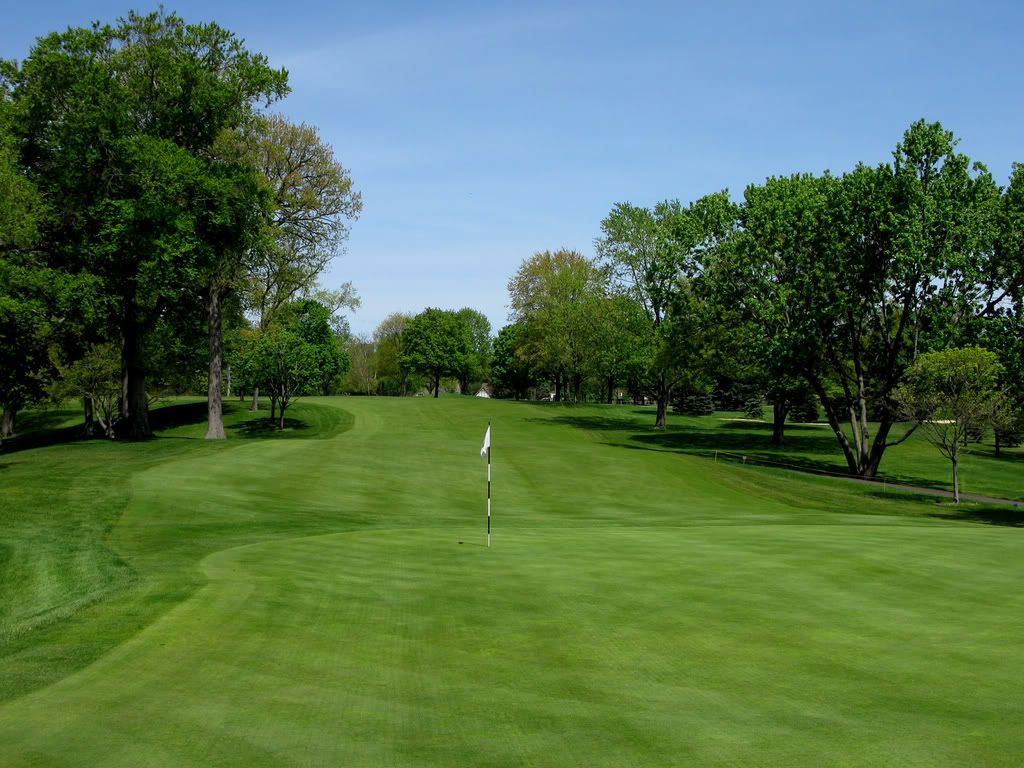
16 tee
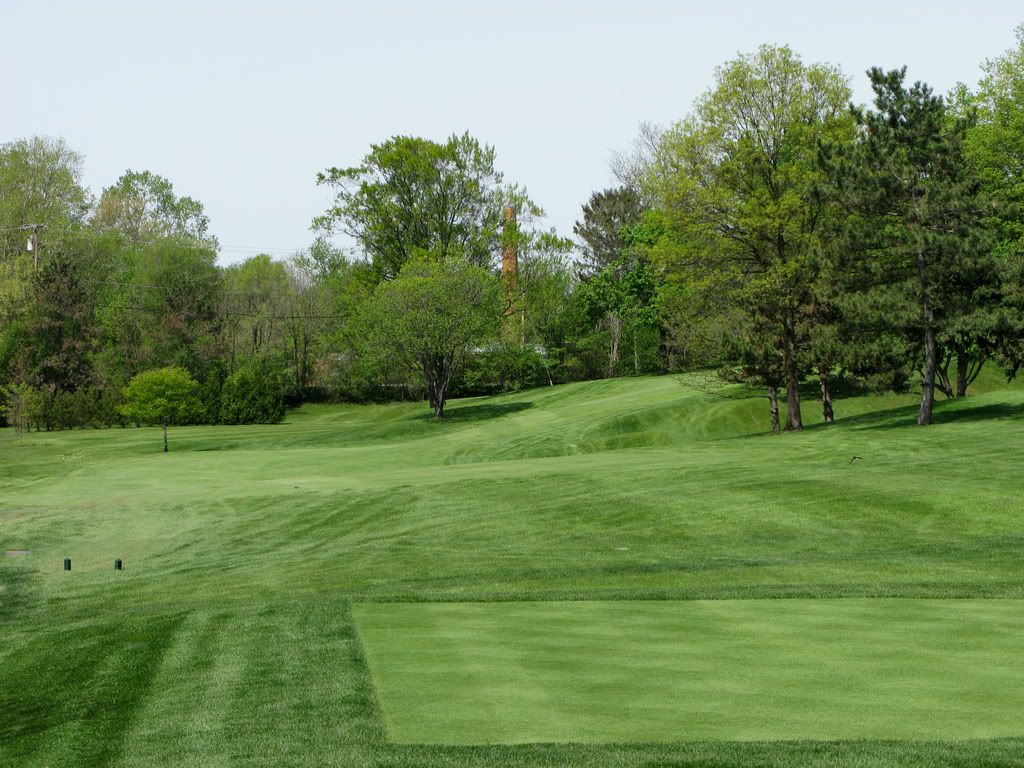
16 fw

16 green

8 green

9th hole with new tee construction in process
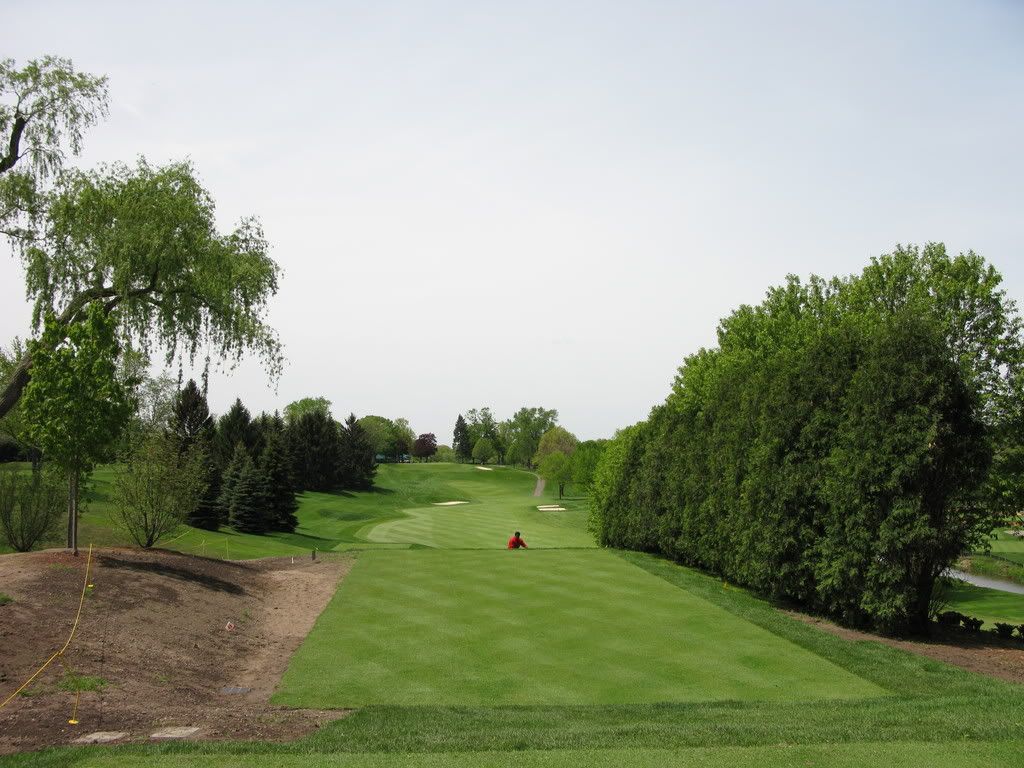
10 green

11 green

15 green

18 green
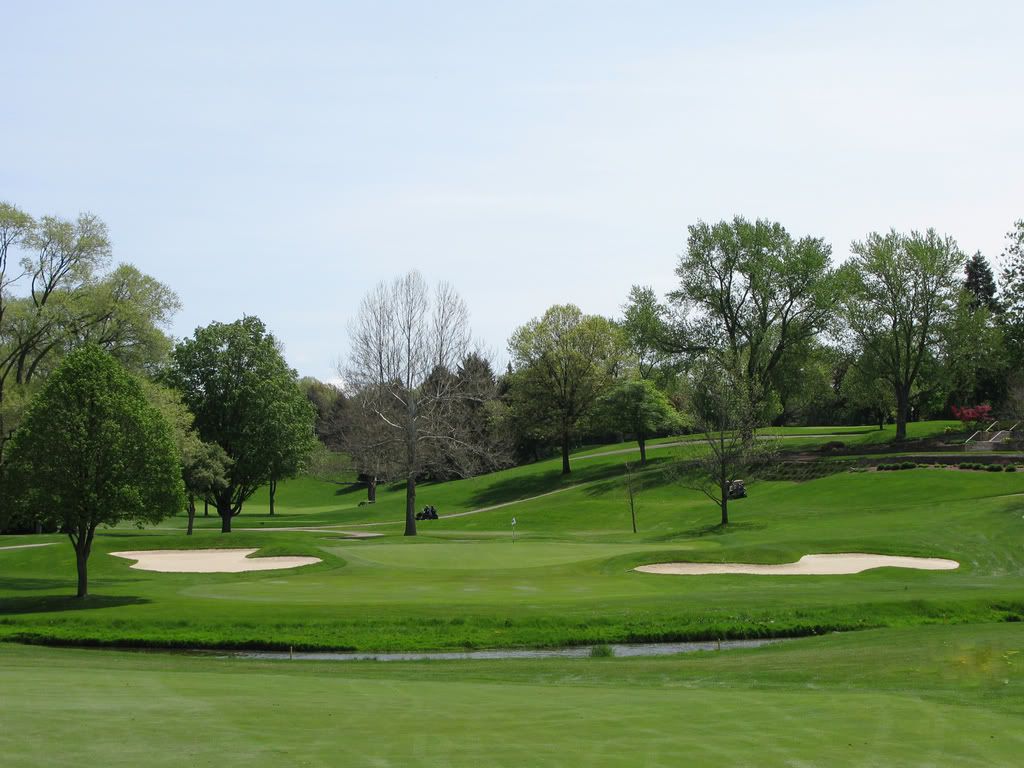
Clubhouse
